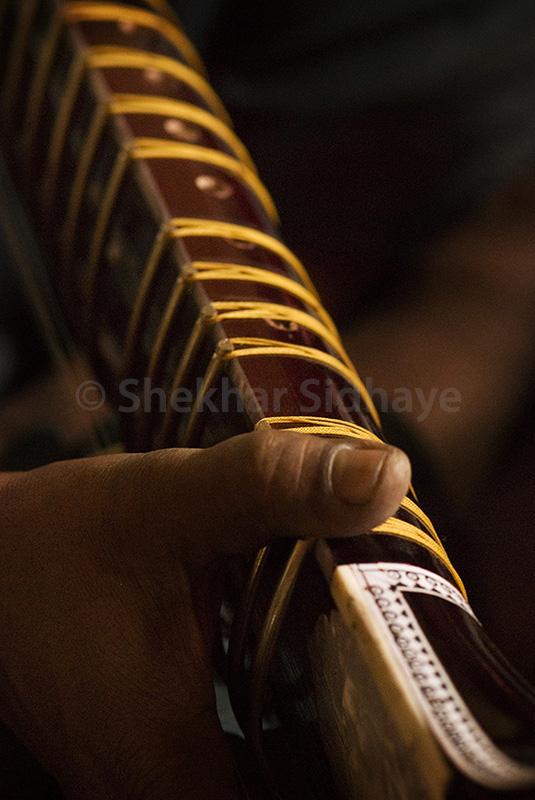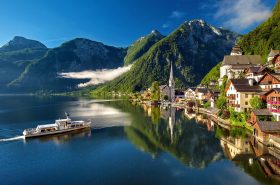
A pictorial anecdote of the gradually ceasing traditional art of Sitar & Tanpura making.
Text by Vinita Sidhaye
Photographs by Shekhar Sidhaye
Sitar and Tanpura making is more than a century-old tradition in a town called Miraj, in Southern Maharashtra with temperatures ranging between 26°C-12°C during winters. This town is recognised for Hindustani classical music performances, medical services and as a place of religious harmony. Miraj is well known for the production of Indian string instruments. The art of instrument making was started by Faridsaheb Sitar maker in the 1700s. Today, Siraaj Yusuf Sitar maker’s fifth generation is busy working in their century-old workshop shielding this tradition. This is an art where the instrument making is never taught in a classroom but is learnt on the job. The workshop itself becomes a classroom for a youngster who starts learning under the guidance of the senior craftsmen.
In spite of the modish drift, where electronic instruments are rapidly replacing the traditional ones, the artisans in the “Sitar Maker’s lane” in Miraj are striving to keep this art alive. Almost every household is contributing in its own way to promote this age-old tradition of handcrafted string instruments.
Here, the photographer narrates a pictorial anecdote of the handcrafted string instruments along with the adversity of the artisans who bring a dead pumpkin alive to create something as divine as these instruments.
These are some of the highlights of the intricate process of Sitar and Tanpura making.
The art of Sitar & Tanpura making makes an unsightly pumpkin look divine.
These inedible pumpkins are specially grown for instrument making in the arid land of Pandharpur, in the South East of Maharashtra. It takes more than 9 months to have fully grown and naturally dried pumpkins.
Note: Pandharpur is well known as a pilgrim centre. The Vitthal, Vishnupad, Rukmini and Pundalik edifices are the most famous temples here. The temperature during winter ranges between 28°C-12°C.
Once a pumpkin is selected for the musical instrument, it is cut from the top and cleaned. It is filled with water for two days and then drained to make it soft so that it can be tweaked to get in perfect shape.
Once the wooden neck has been fitted on to the pumpkin with the help of lacquer, the pumpkin and the main ‘daandi’ are fitted together. This is a tricky process where the angle should be maintained in such a way that the strings rest on the faceplate precisely.
Polishing is a time-consuming process, which takes anywhere from two days to more than a week’s time.
Artisans are always eager to try new designs and patterns without disturbing the main design of an instrument.
Tuning an instrument is an art by itself. And for fine-tuning the Jawaari, one needs an experienced ear. Usually, such jobs are done by the senior-most people in the workshop. Before the delivery of the instrument, utmost care is taken to keep all the strings in complete sync with each other.
Each artisan has a fixed place of work in the workshop. This man has polished thousands of instruments to date and knows all intricate things related to different polishes. Various numbered sand polish papers are used depending on the stage of the polish.
Once an instrument is ready to be transported, Sitar makers do a last-minute quality check to ensure everything is done as per the set standards.
Sitars are also made in Delhi and Kolkata. Here Bharatratna Shri Pt. Ravi Shankar is seen playing his specially modified flat Sitar that is made in Delhi. Renowned artists like him place special orders for Sitars as well as Tanpuras; such orders take months to complete.
The photograph used for the blog header and our website homepage banner has been captured and shared with us by independent photographer Shekhar Sidhaye.
Copyright © owned by Shekhar & Vinita Sidhaye
All rights reserved. This photo-essay or any portion thereof
may not be reproduced or used in any manner whatsoever
without the express written permission of the owners.
Shekhar Sidhaye
Photographer & Artist
Shekhar Sidhaye is a Mumbai based independent photographer. After graduating from Mumbai’s Sir J.J. School of Applied Arts, he has worked as a Visual Designer & Photographer for more than fifteen years in various multinational companies. He loves to capture cultures, traditions, people, their stories and anything that requires aesthetic documentation and visual interpretation. His other passions are fine art photography, travel, music and collecting scaled-down replicas of vintage vehicles. You can follow Shekhar on LinkedIn and his work at http://www.shekharsidhaye.com/
Vinita Sidhaye
E-learning Consultant, German Translator & Travel Blogger
Vinita Sidhaye is a Mumbai based independent writer, travel blogger and a German language professional. After doing her Masters in English literature from Mumbai University and 6 levels certification course in the German language from Goethe Institute, she worked in several multinational companies as a Content Writer and Instructional Designer. She has recently shifted into full-time independent writing, German translation and travel blogging. Her other passions are reading, music, travel, cooking and food styling. You can follow Vinita on LinkedIn














